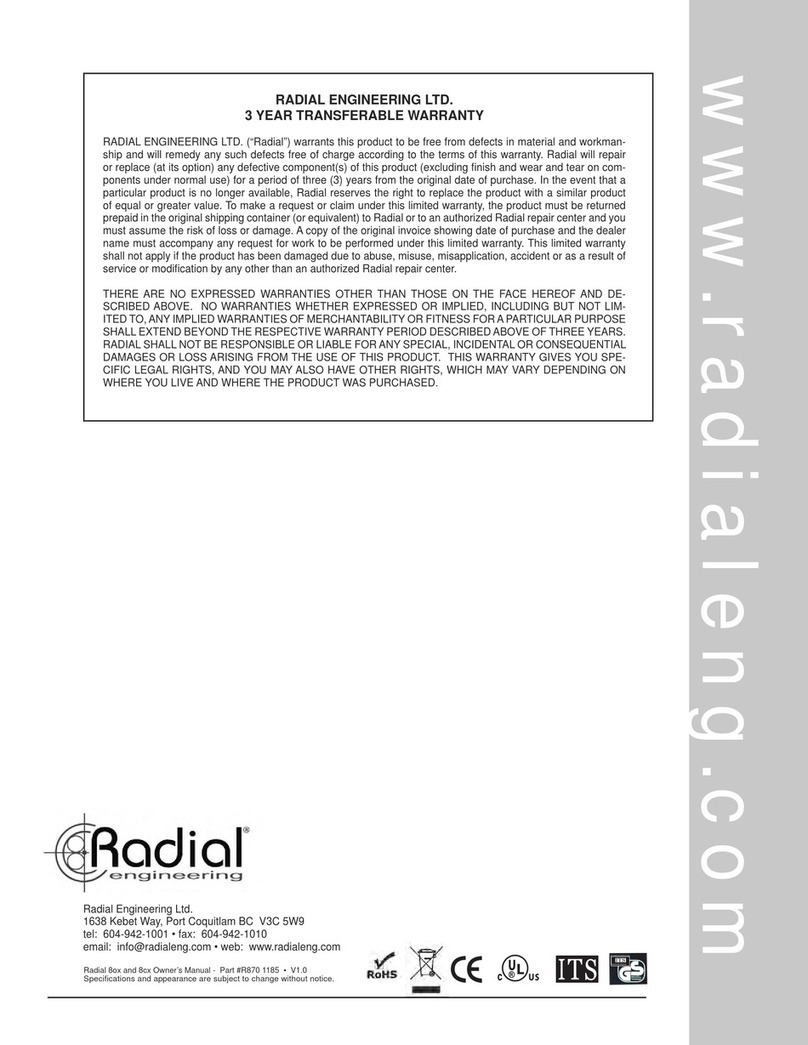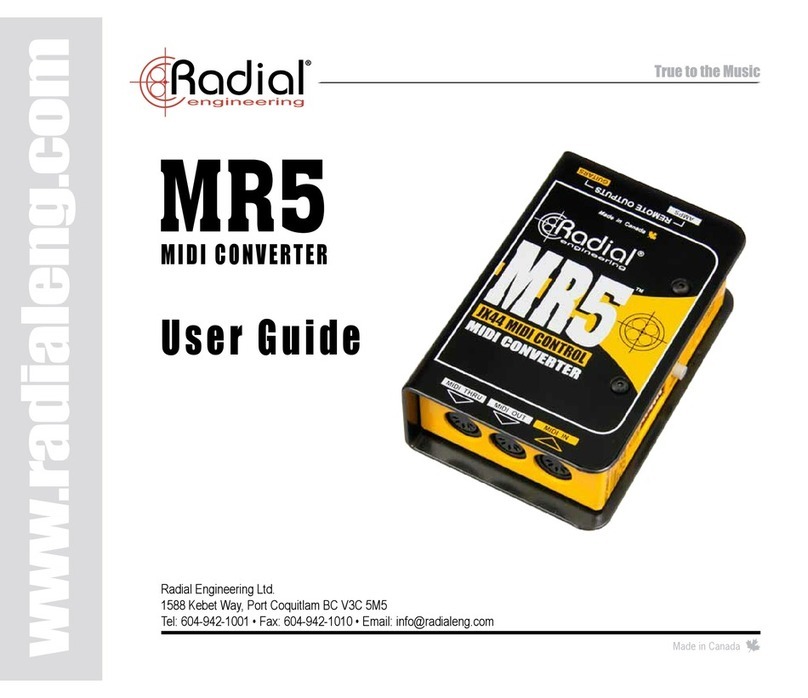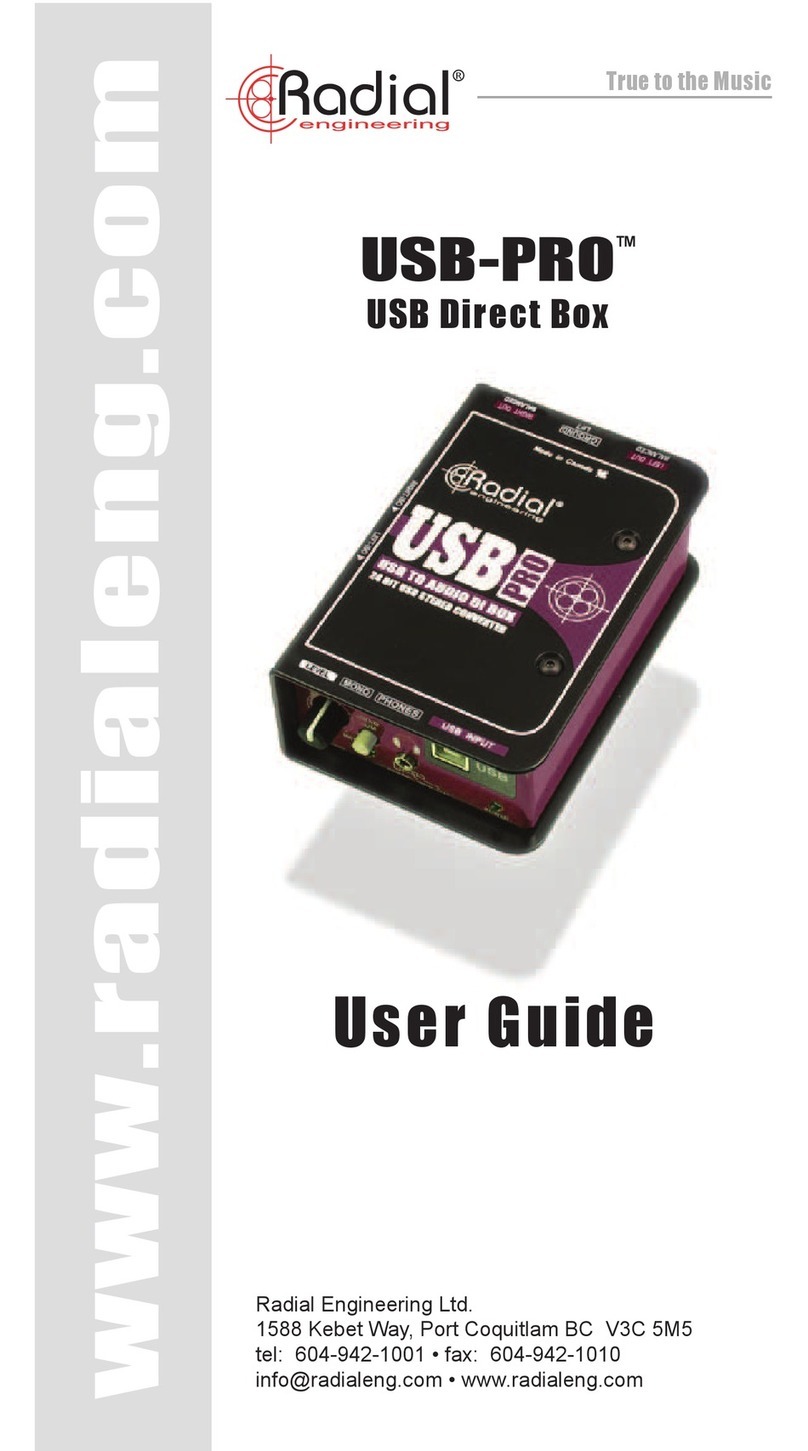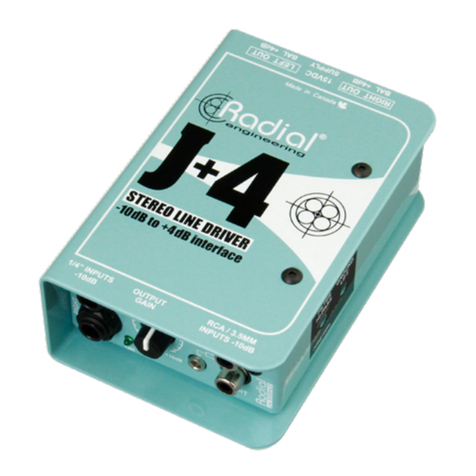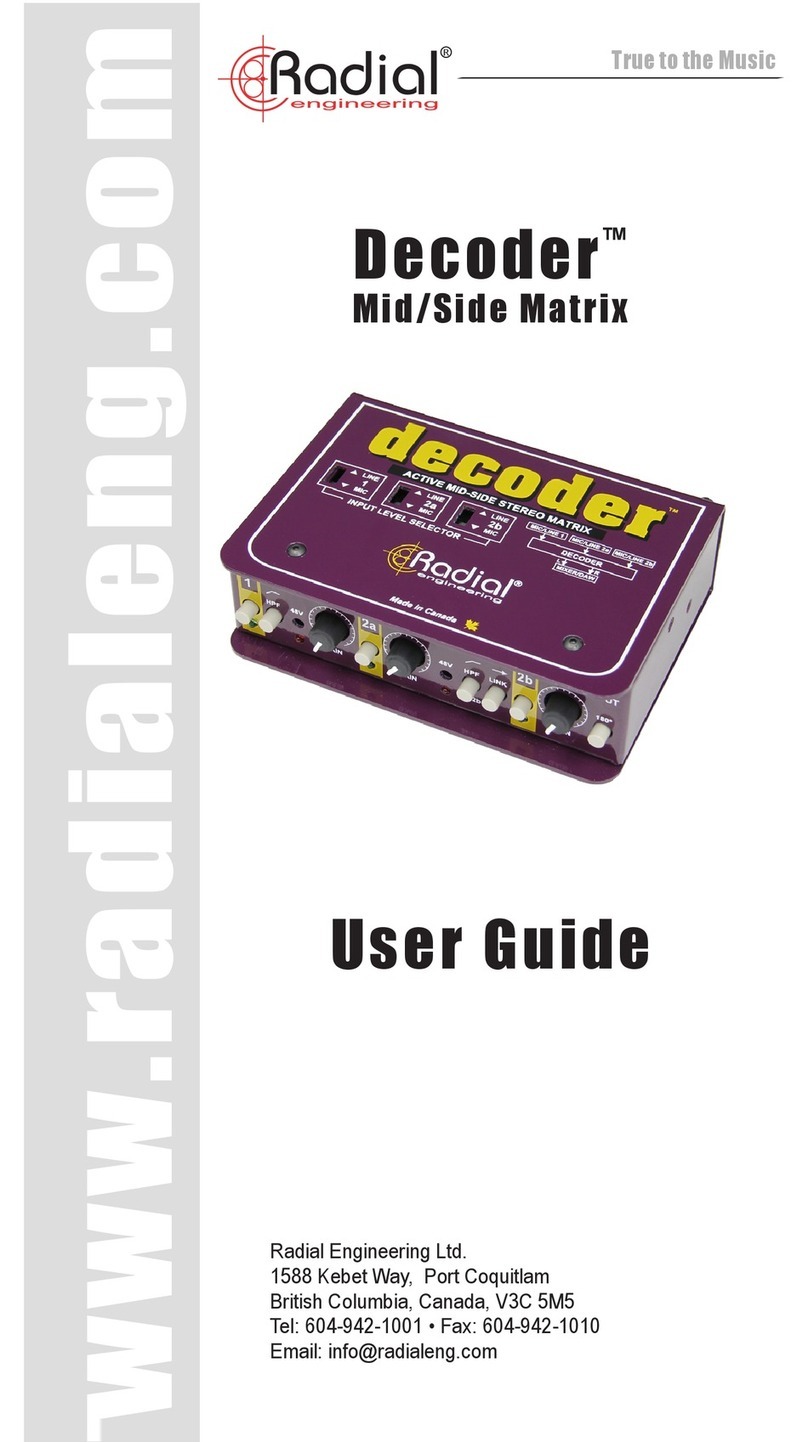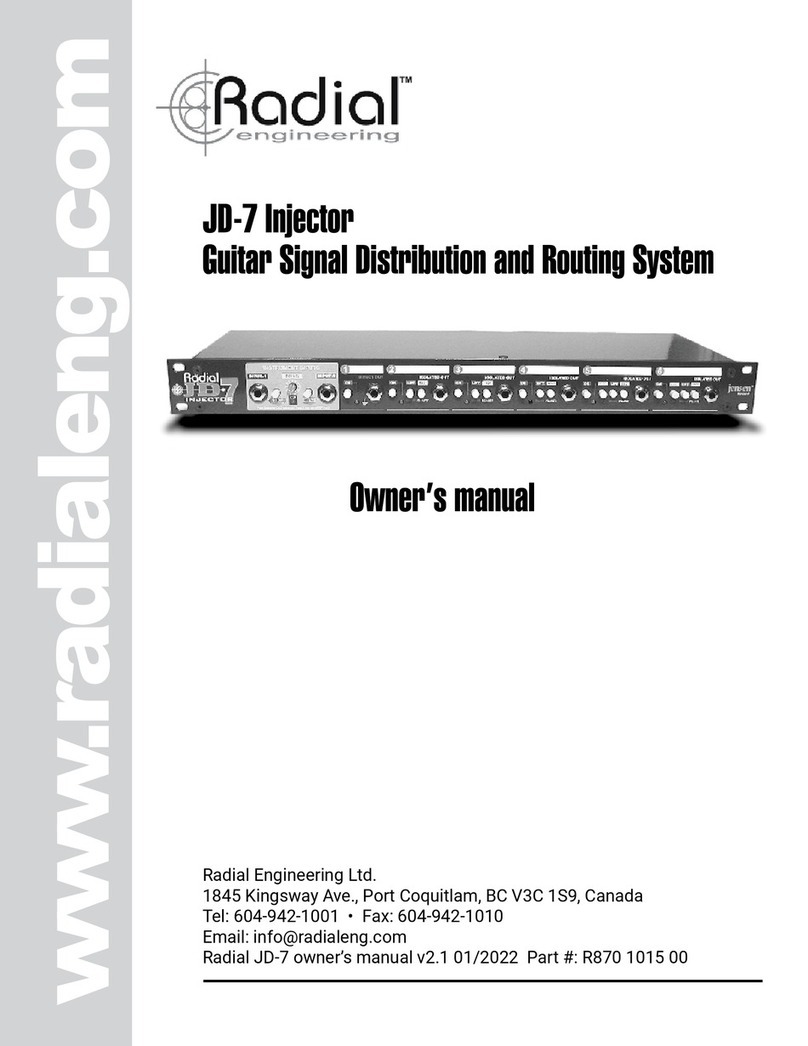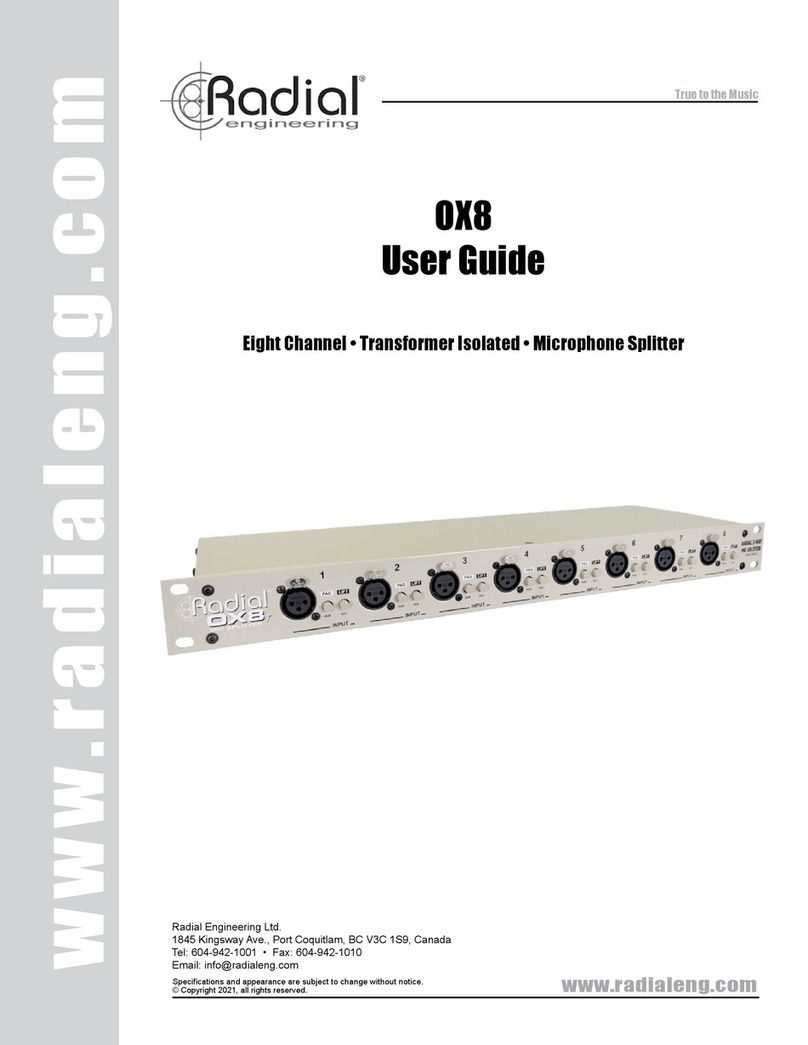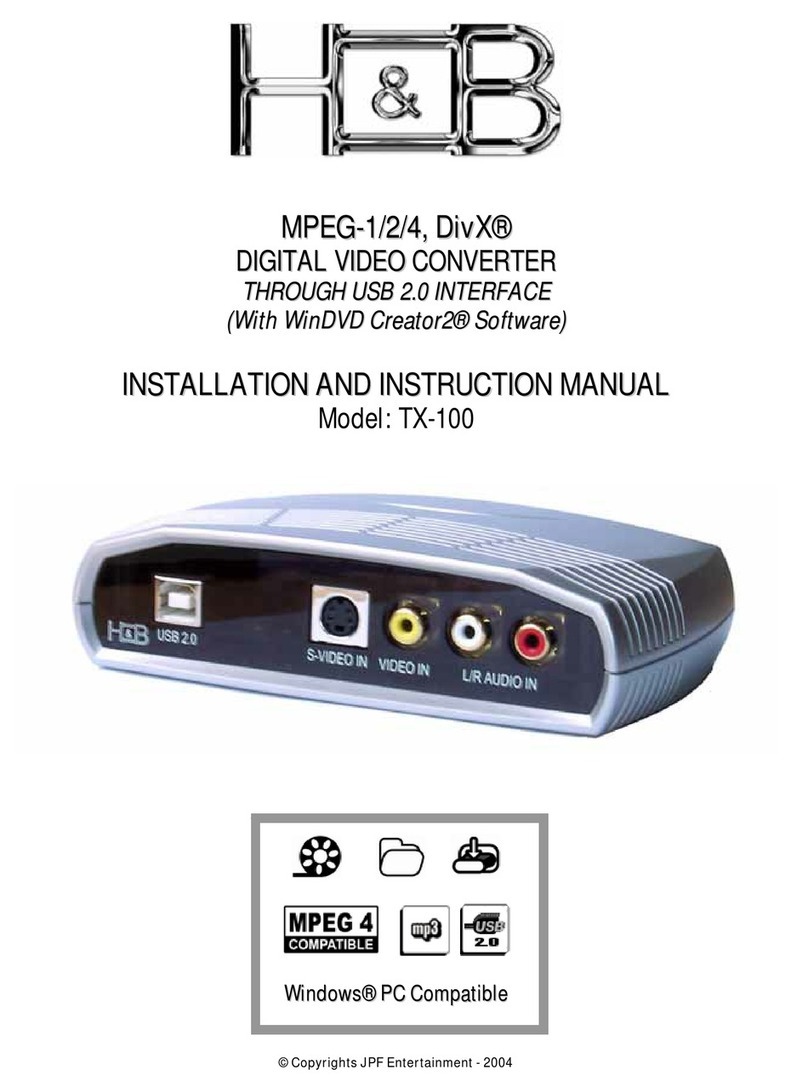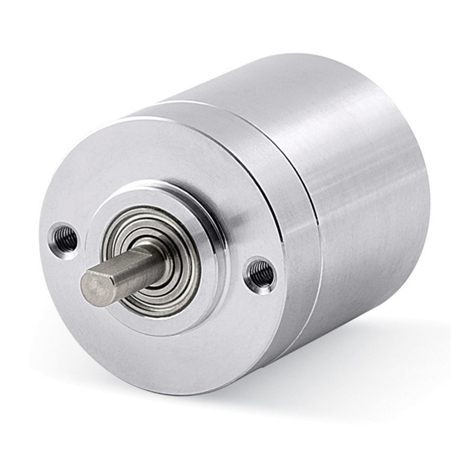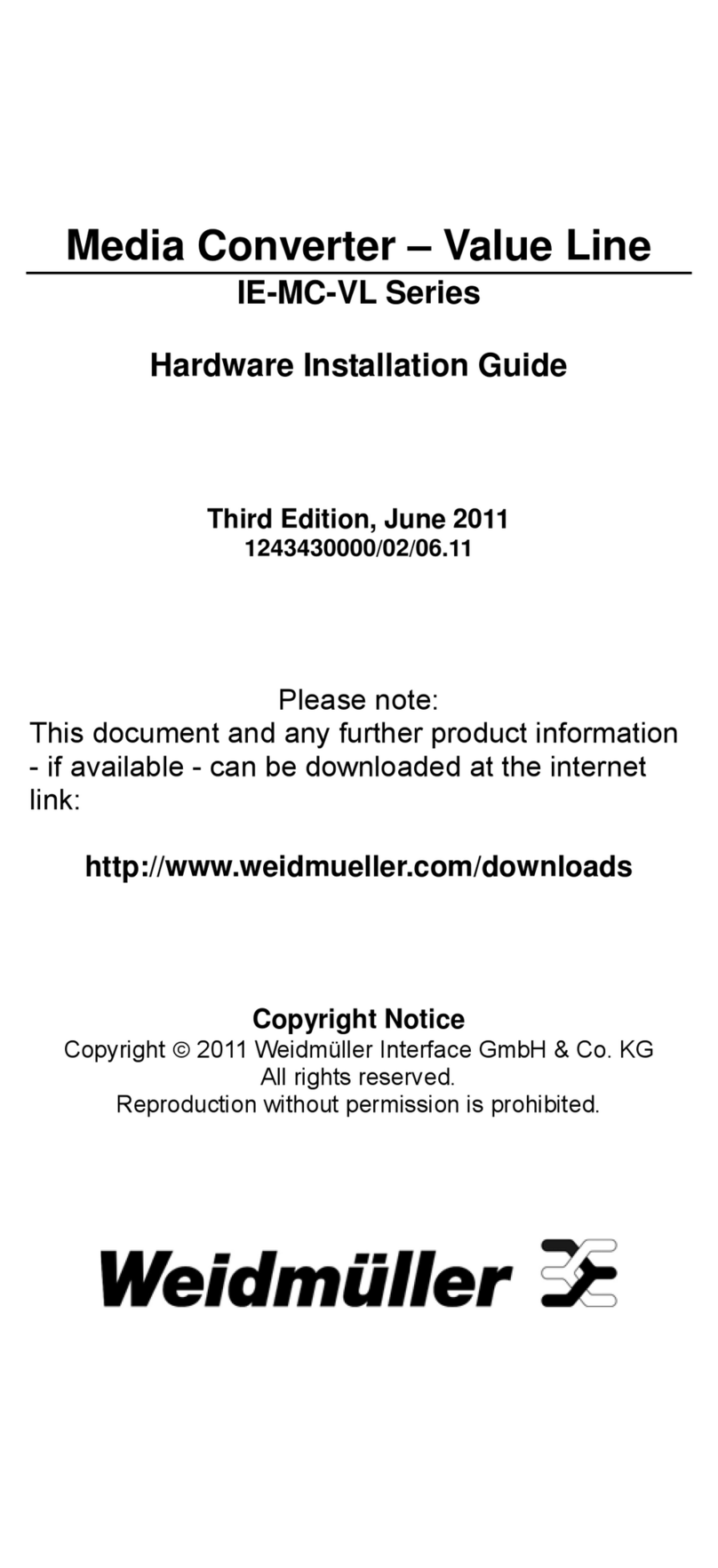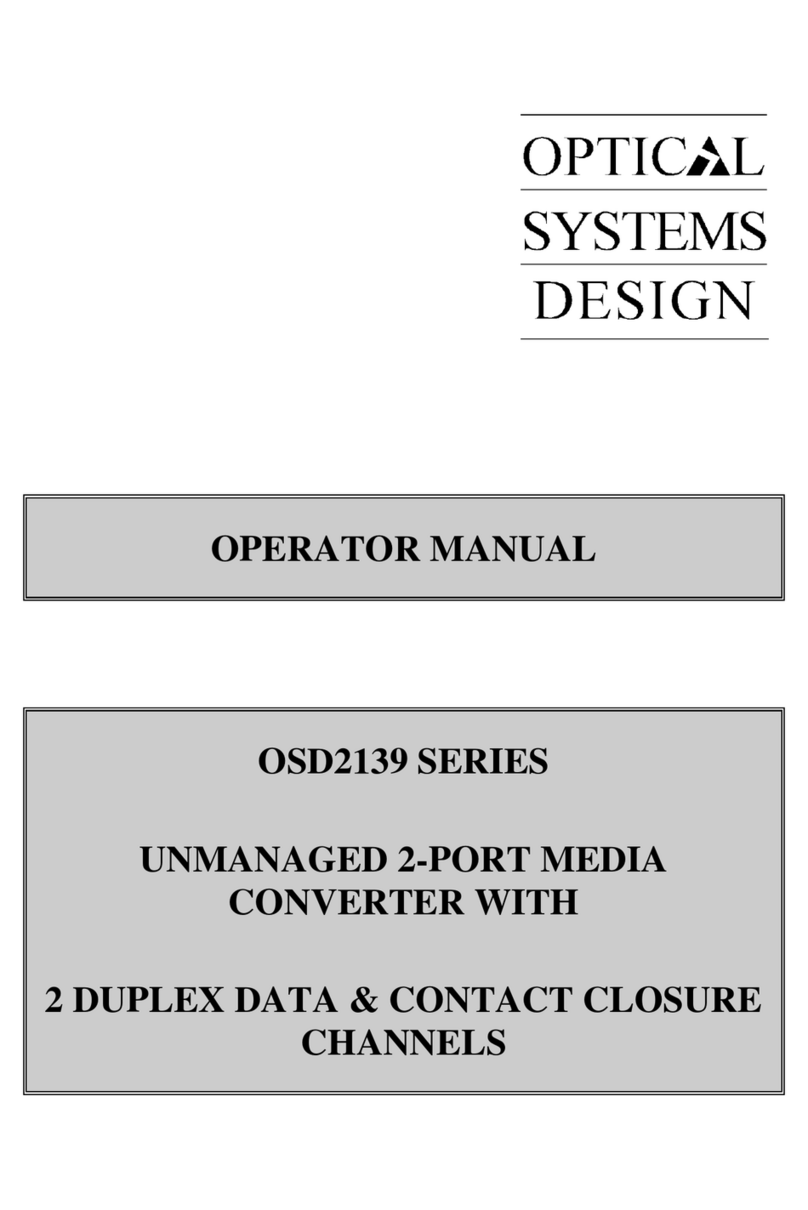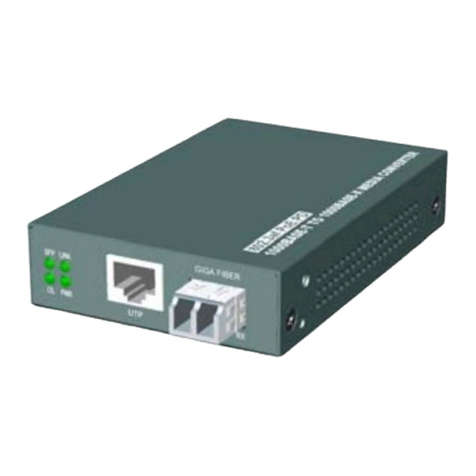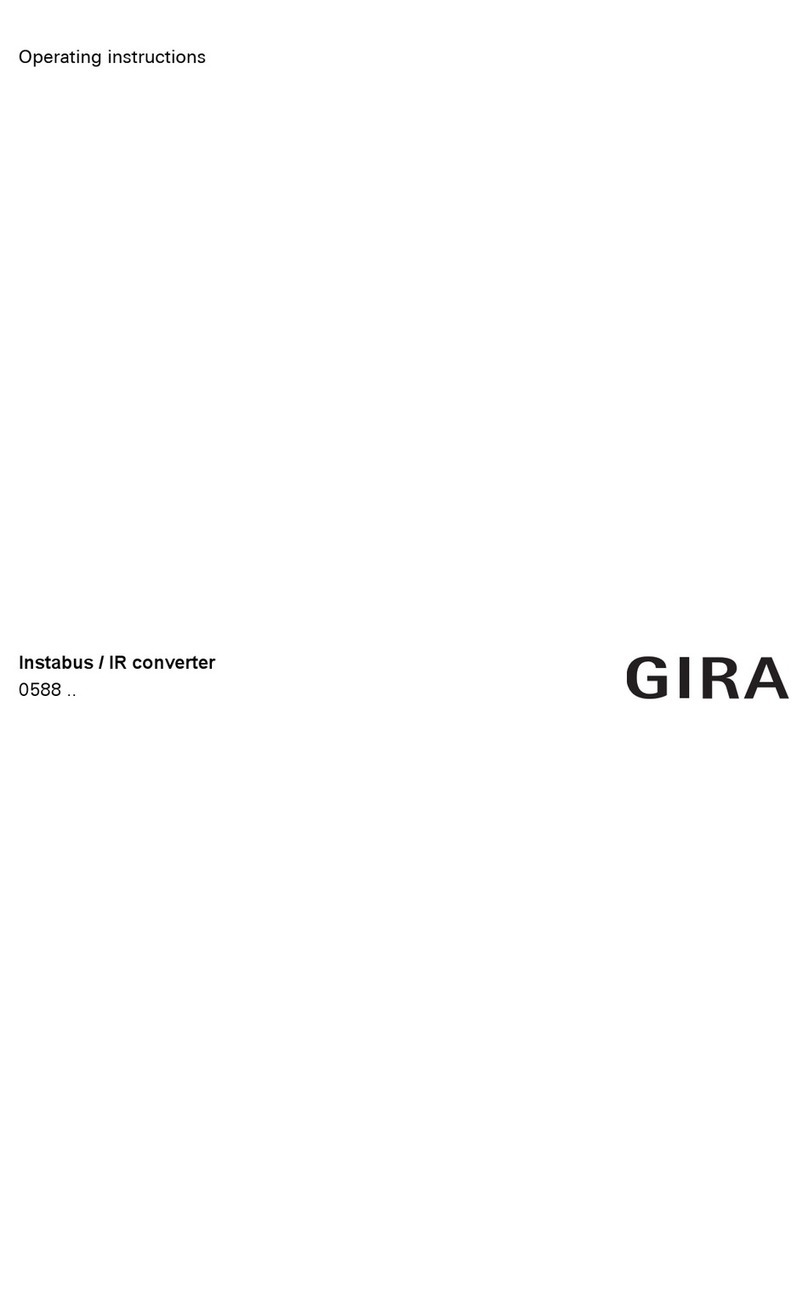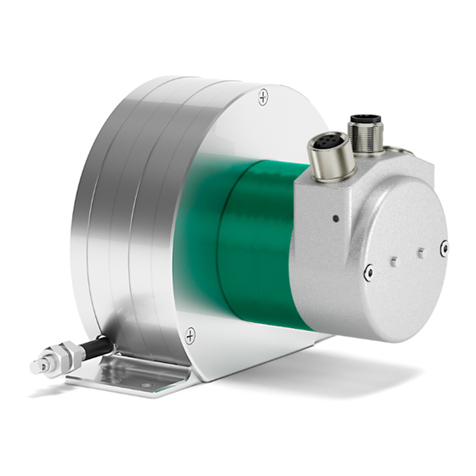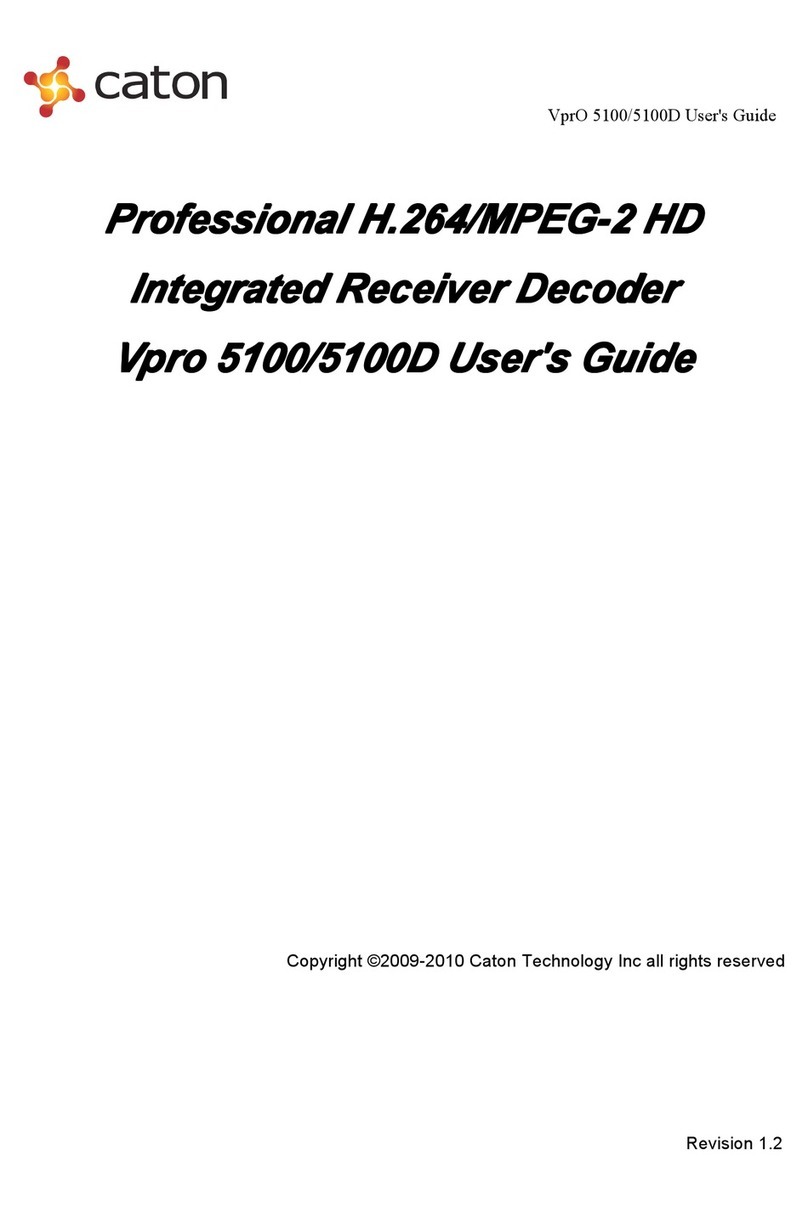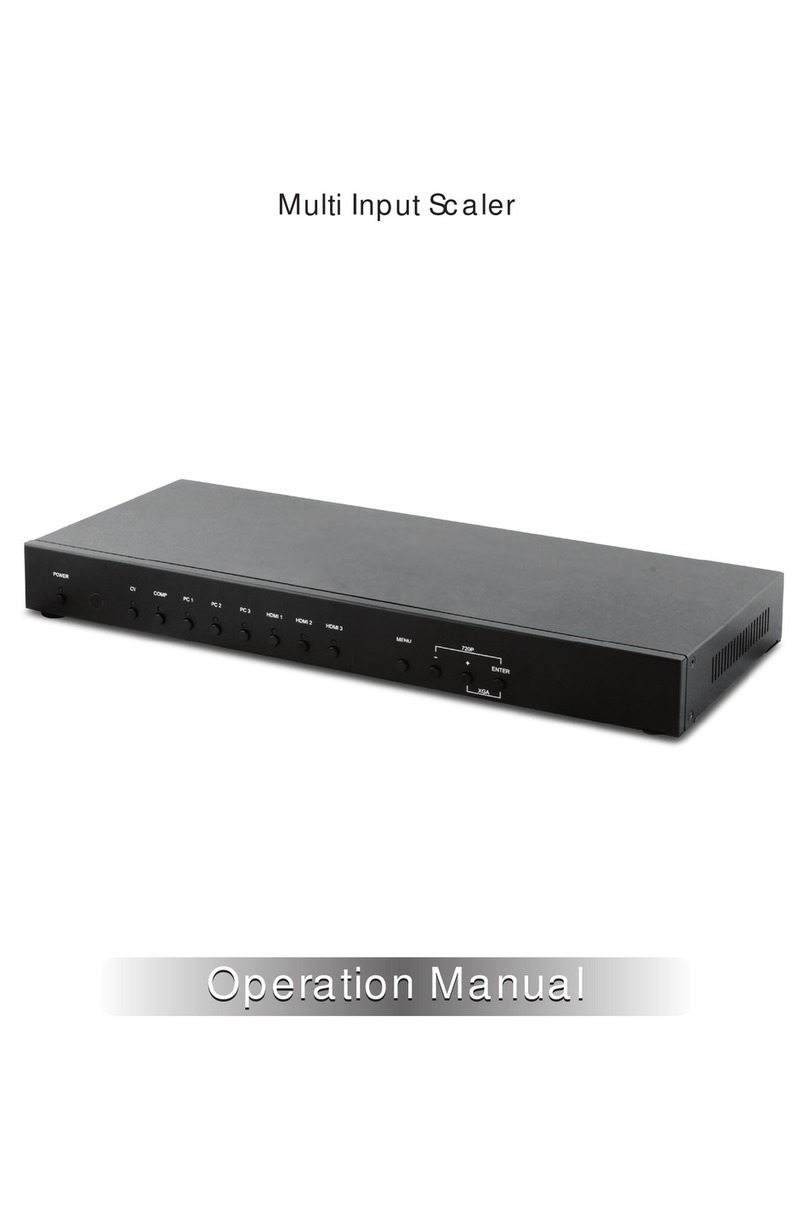
Radial Engineering JDI User Guide
5
Getting to know your Radial JDI Mk3
As a rule, all direct boxes follow the same basic procedures when connecting them to a sound system. The instrument plugs
into the INPUT, the musicians’ instrument amplifier connects to the THRU and the mixer or recorder is connected to the
XLR ‘OUTPUT’. Since the XLR output connection to the mixer taps the signal before it goes to the musician’s amplifier, this
allows the mixing engineer to ‘capture’ the signal before it is modified by the musician, thus resulting in the purest source
possible. It is important to note that what may sound good on stage may not necessarily sound good in the venue.
By sending an unaltered signal to the front of house mix position (FOH), the engineer is able to get the sound he is looking
for with minimal phase and harmonic distortion. This is likely the main reason why Radial direct boxes are so popular with
sound engineers — Radial DI’s do not alter the sound in any way before it gets to the mixing desk.
High to low impedance conversion and balancing
The Radial JDI features a high 140k Ohm input impedance for the instrument. As the signal passes through the JDI to the
XLR output, it is converted to a balanced 150-Ohm low impedance signal. This allows long cable runs without introducing
noise into the audio signal path. It is important to note that the output of the Radial JDI is a mic level signal. This allows the
JDI to be used alongside other microphone signals without introducing cross-talk or causing transformer saturation when
driving the signal through the mic bridging transformers of a splitter.
The magic of a great transformer
The Radial JDI is a passive direct box – this means that it employs a transformer to convert the impedance and balance
the signal. At Radial, we believe quality should always be the most important deciding factor in any product design and the
best way to make great products is to use the very best parts. Many Radial products incorporate Jensen® audio transformers
which are expensive, but to an audiophile, these transfrmers are worth their weight in gold. A good transformer must be
able to pass every frequency between 20Hz and 20,000Hz flawlessly. The transformer must also ensure that all of these
frequencies retain their time-base relationship or ‘absolute phase’. In other words, whatever you send in should come out
at the same time. If the bass and mid range are not synchronized in perfect phase, it simply will not sound as good.
A transformer is a simple device. It is basically made up of three components: (1) the primary or input coil, (2) the core
material and (3) the output coil. The audio signal enters the primary coil and, taking full advantage of Faraday’s law of
electromagnetism, the coil converts the electron impulse (current) into a magnetic field. The core acts like a conduit to
contain the magnetic field and drives it into the secondary coil. A magnetic field, when driven into a coil, generates electron
True to the Music
